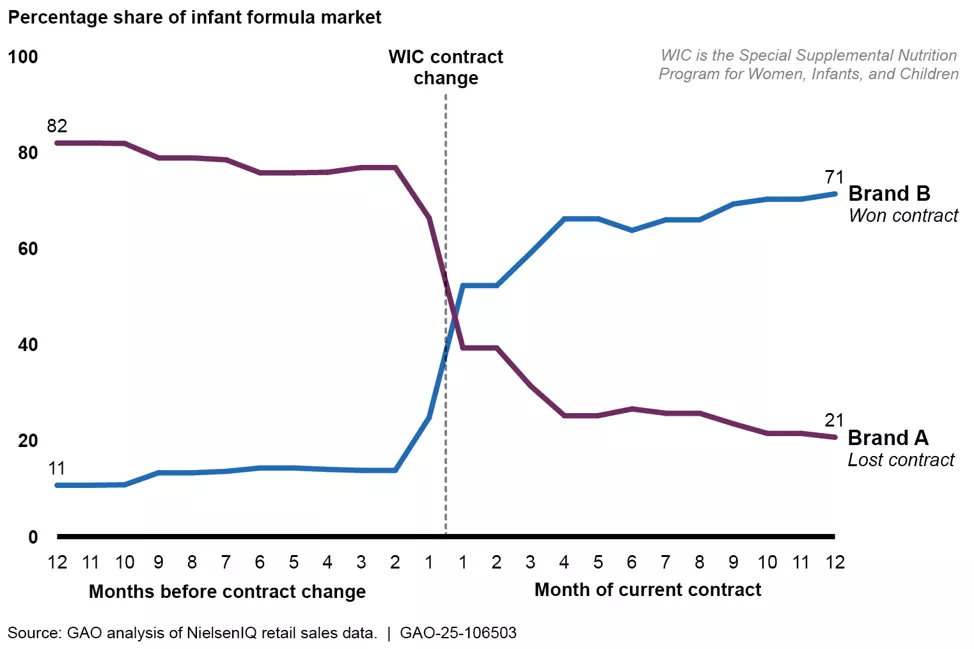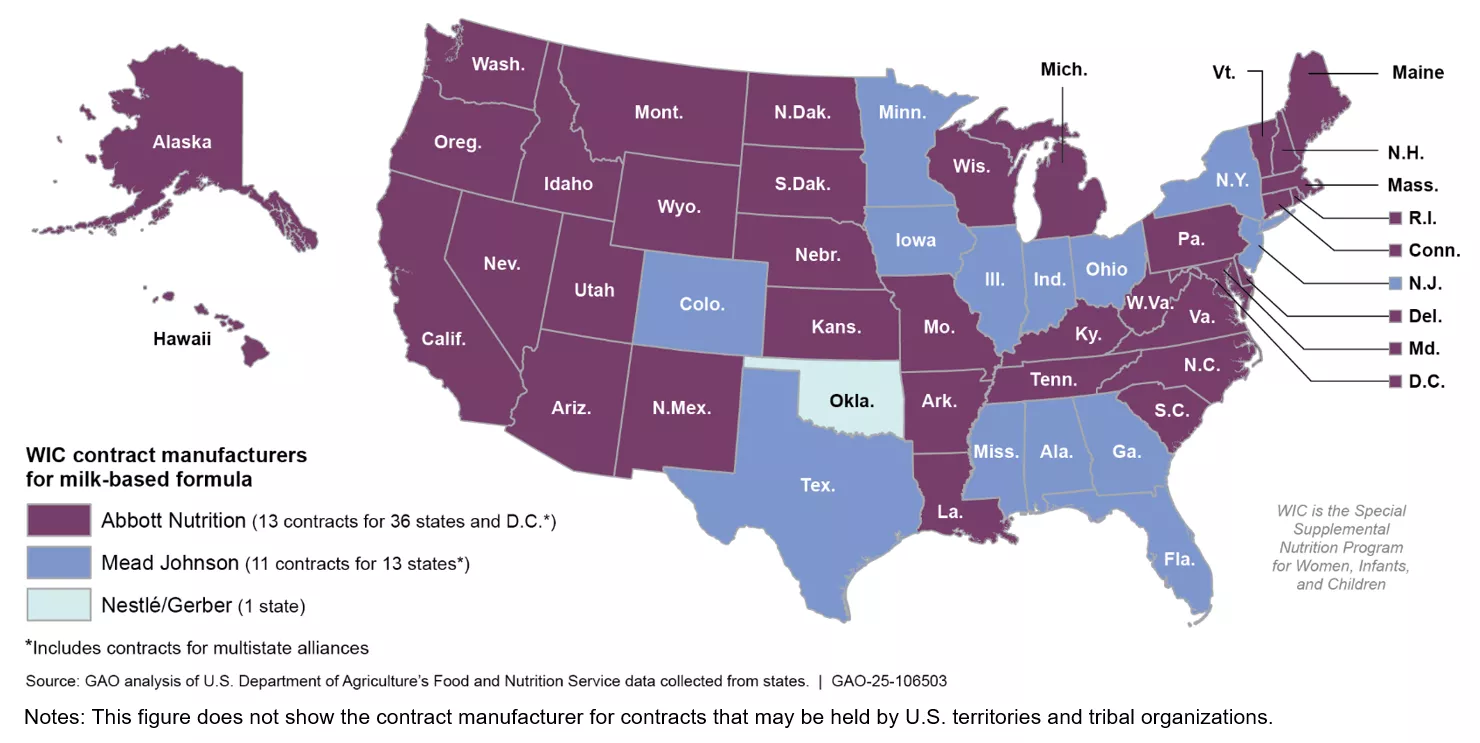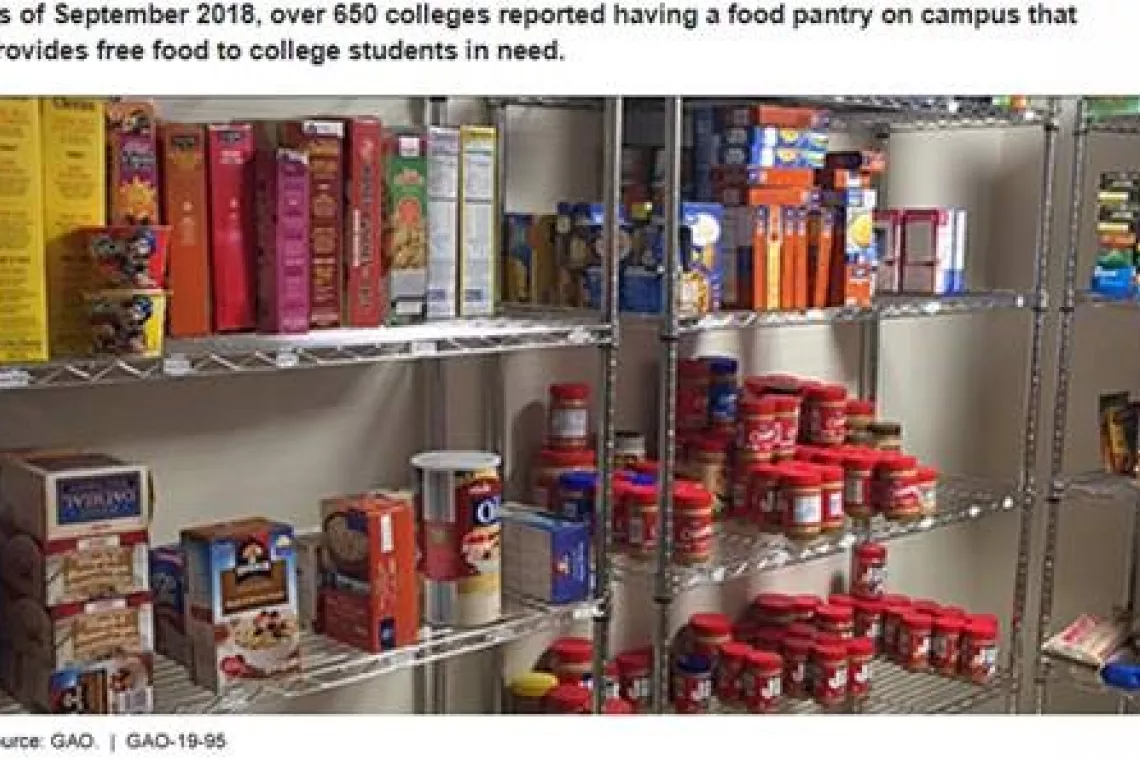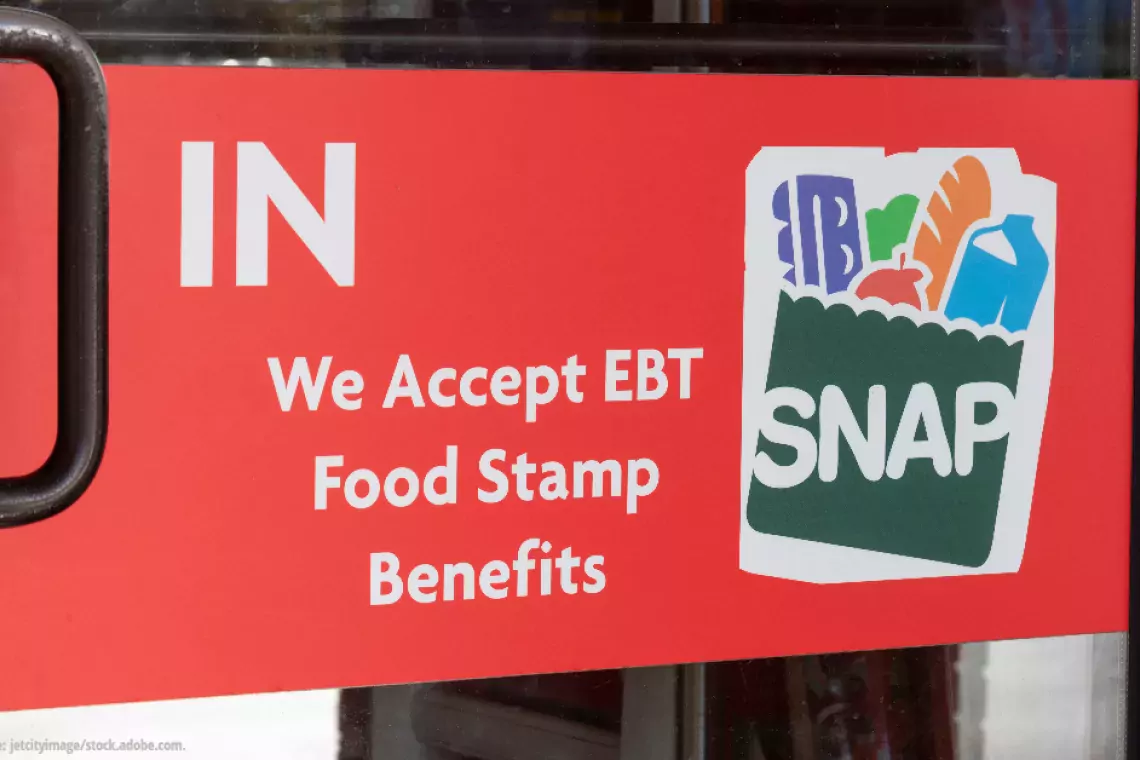Baby Formula’s Biggest Buyer Takes a Closer Look at Supplies and Shortages
You might not know this, but the federal government is the biggest buyer of baby formula in the United States. About 40% of all American babies get formula through a federal food assistance program for low-income mothers and children—the Supplemental Nutrition Program for Women, Infants, and Children (WIC). Being the biggest buyer gives the government leverage to solicit lower prices, which is done at the state-level.
But a critical shortage of infant formula in 2022 raised questions about how this system for WIC affects supply and prices of formula.
Today’s WatchBlog post looks at our new report on how this system works and possible alternatives.
Image

How a nationwide shortage causes concerns about formula contracts
In 2022, Abbott Nutrition halted production at its Michigan plant for about 4 months after concerns of a potential bacterial contamination. The company also recalled several brands of powdered formula after four hospitalizations and two deaths of infants caused by the same type of bacteria found in the plant.
This halt in production, combined with pandemic-related supply chain issues, resulted in a shortage that affected more than one-third of parents with infants, including families who got their formula through WIC.
To help ease the shortage, the federal government temporarily waived some restrictions on the type of infant formula that families could purchase with WIC benefits. The Food and Drug Administration (FDA) also temporarily allowed certain foreign manufacturers to sell formula in the U.S. without meeting all FDA requirements.
While the shortage was resolved, it raised concerns about whether WIC’s system for purchasing formula worsened supply chain disruptions and made shortages more severe.
Grocery Store Shelves During the 2022 Baby Formula Shortage
Image

A single supplier reduces government costs but concentrates the supply of formula
State agencies that manage WIC use a competitive bidding system for manufacturers to become the single supplier of baby formula. The manufacturer offering the lowest price wins a multi-year contract to supply formula for that state, or for multiple states that decide to work together under one contract.
The lowest price is determined in large part by the discounts or “rebates” manufacturers agree to provide for each container of their formula. These rebates have historically been very large—sometimes more than the manufacturer’s wholesale price. Why would manufacturers want to offer such high rebates?
Winning a contract can increase a brand’s sales and market share—among not just WIC participants but other formula buyers as well. We found that this “spillover effect” contributed to a 6-fold increase in market share, on average, for contract winners.
Estimated Change in Market Share When a New Manufacturer Wins a WIC Contract
Image

The biggest advantage of this system has been saving the federal government (and therefore taxpayers) money. Rebates allow states to spend less providing formula to needy mothers and children, who receive formula at no cost. And these rebates allow WIC to serve additional participants each year with the money saved. In fiscal year 2023, rebate savings totaled $1.6 billion and funded benefits for an average of 1.3 million participants each month.
While prices are lower for the government, we found that this system raised prices for non-WIC consumers about 30 cents for a typical 12-ounce container of milk-based powder formula.
Also, the current system may make it difficult for smaller companies to bid on WIC contracts. Manufacturers must offer rebates in different forms of formula (powder, liquid concentrate, and ready to feed) and be able to supply formula for an entire state or multiple states. As of August 2024, just three manufacturers held contracts to provide baby formula for the WIC program across the entire country. Since that time, Nestlé/Gerber transitioned out and now only two manufacturers have WIC contracts.
WIC Contract Manufacturers for Milk-Based Infant Formula by State, August 2024
Image

What’s the alternative?
In our new report, we identified alternatives that could address some disadvantages of the current system, including lack of consumer choice of formula brands and the vulnerabilities to supply issues. But alternatives come with trade-offs.
One alternative is to give participants a “cash value” benefit for formula, which would allow them to purchase any brand that did not exceed a set cost. This would give consumers more freedom of choice, while also avoiding some of the single-supplier issues highlighted above. It might also incentivize lower prices across brands as competition increases among manufacturers. However, without rebates the federal government’s costs would likely increase. That could result in the program serving fewer participants each year.
States could also contract with multiple manufacturers to provide participants additional choices and mitigate potential supply disruptions. But this alternative could result in additional, administrative burdens for states managing multiple contracts. And manufacturers would likely reduce the size of their rebates to states without the guarantee of an exclusive contract.
For more information on these alternatives and the WIC infant formula program, check out our new report.
- GAO’s fact-based, nonpartisan information helps Congress and federal agencies improve government. The WatchBlog lets us contextualize GAO’s work a little more for the public. Check out more of our posts at GAO.gov/blog.
- Got a comment, question? Email us at blog@gao.gov.
GAO Contacts
Related Products

GAO's mission is to provide Congress with fact-based, nonpartisan information that can help improve federal government performance and ensure accountability for the benefit of the American people. GAO launched its WatchBlog in January, 2014, as part of its continuing effort to reach its audiences—Congress and the American people—where they are currently looking for information.
The blog format allows GAO to provide a little more context about its work than it can offer on its other social media platforms. Posts will tie GAO work to current events and the news; show how GAO’s work is affecting agencies or legislation; highlight reports, testimonies, and issue areas where GAO does work; and provide information about GAO itself, among other things.
Please send any feedback on GAO's WatchBlog to blog@gao.gov.





